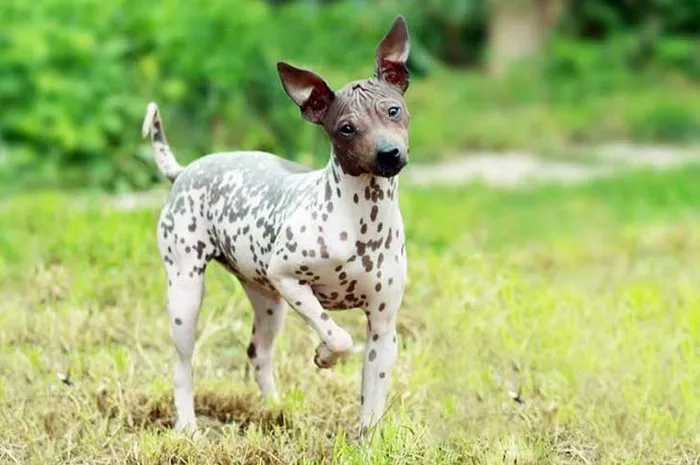Hairless dogs, such as the Chinese Crested and the Xoloitzcuintli, are a unique and fascinating breed of dog. While they may not have fur, hairless dogs still require special care to keep them healthy and comfortable. In this article, we will explore the unique care needs of hairless dogs, including their skin care, grooming, and nutrition.
Characteristics of Hairless Dogs
Hairless dogs are a unique breed of dog that lack fur or have minimal hair. Some common breeds of hairless dogs include the Chinese Crested, the Xoloitzcuintli, and the Peruvian Inca Orchid. Hairless dogs have a distinctive appearance, with smooth, soft skin that can be a variety of colours, including pink, black, and grey.
Hairless dogs are also known for their friendly and affectionate nature. They are often described as being highly social and love to be around people. They are also known for their high energy levels and love of play and exercise.
Skin Care for Hairless Dogs
One of the most important aspects of caring for hairless dogs is skin care. Hairless dogs have sensitive skin that requires regular care to prevent irritation, dryness, and infection. Here are some tips for caring for the skin of hairless dogs:
Sun protection: Hairless dogs are particularly vulnerable to sunburn and skin damage, so it is important to protect their skin from the sun. This can include using a pet-safe sunscreen or providing shade when outside.
Moisturizing: Hairless dogs require regular moisturizing to prevent dryness and cracking of the skin. This can include using a pet-safe moisturizer or oil on their skin.
Bathing: Hairless dogs require regular bathing to keep their skin clean and healthy. However, it is important to use a gentle, pet-safe shampoo and to avoid over-bathing, which can strip the skin of its natural oils.
Skin checks: Regular skin checks can help identify any potential skin issues early on. This can include checking for redness, bumps, or other signs of irritation.
Clothing: Hairless dogs may benefit from wearing clothing to protect their skin from the elements, particularly in cold or wet weather.
Grooming for Hairless Dogs
While hairless dogs may not require traditional grooming in the same way that furry dogs do, they still require regular care to keep them comfortable and healthy. Here are some tips for grooming hairless dogs:
Nail trimming: Hairless dogs require regular nail trimming to prevent overgrowth and discomfort.
Ear cleaning: Hairless dogs may be more prone to ear infections due to their lack of hair, so regular ear cleaning is important.
Dental care: Hairless dogs are prone to dental issues, so regular dental care, including brushing and professional cleanings, is important.
Skin care: As we discussed earlier, skin care is a crucial aspect of grooming for hairless dogs.
Diet for Hairless Dogs
Diet is an important aspect of caring for hairless dogs. Hairless dogs may have unique dietary needs due to their lack of fur and sensitive skin. Here are some tips for feeding hairless dogs:
High-quality food: Hairless dogs require high-quality food that is rich in nutrients and protein to support their skin health and overall well-being.
Limited ingredients: Hairless dogs may be more prone to food allergies, so it is important to choose a limited ingredient diet that is free from common allergens.
Supplements: Hairless dogs may benefit from supplements, such as omega-3 fatty acids, to support their skin health.
Hydration: Hairless dogs may be more prone to dehydration, so it is important to provide them with plenty of fresh, clean water.
Exercise for Hairless Dogs
Hairless dogs require regular exercise to maintain their physical and mental health. However, they may have unique exercise needs due to their lack of fur and sensitive skin. Here are some tips for exercising hairless dogs:
Avoid extreme temperatures: Hairless dogs may be more sensitive to extreme temperatures, so it is important to avoid exercising them in very hot or very cold weather.
Protect their skin: Hairless dogs may benefit from wearing protective clothing or sunscreen during outdoor exercise.
Provide mental stimulation: Hairless dogs are intelligent and active dogs that require mental stimulation in addition to physical exercise. This can include games, puzzles, and training sessions.
Monitor for signs of fatigue: Hairless dogs may tire more easily than furry dogs, so it is important to monitor them for signs of fatigue during exercise.
Conclusion
In conclusion, hairless dogs have unique care needs that require special attention from their owners. Skin care, grooming, nutrition, and exercise are all important aspects of caring for hairless dogs. By following the tips outlined in this article, owners can help keep their hairless dogs healthy, comfortable, and happy. With proper care and attention, hairless dogs can make wonderful and loving companions.


